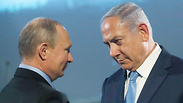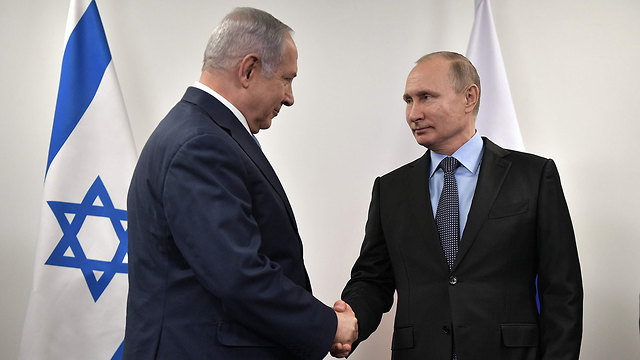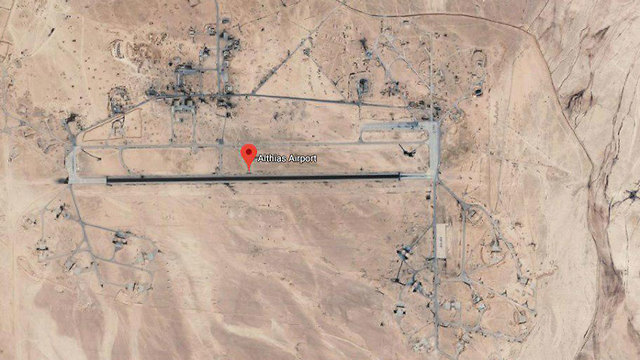

Russian response to Syria strike tests coordination with Israel
Analysis: After agreeing on a system to avoid ‘misunderstandings’ between Israeli and Russian forces in Syria in 2015, Netanyahu made the issue his top priority in his many meetings with Putin. Monday’s attack on the T-4 airbase near Homs and the unusually harsh Russian response are now putting this system to the test, following signs of tensions between the countries in recent months.
Since September 2015, Russia and Israel have been trying to coordinate the military activities concerning Syria in a bid to avoid a direct conflict. In a meeting held at the time between Netanyahu and Putin, in the presence of the IDF chief of staff and the Military Intelligence Directorate head, the Israeli prime minister said: “We must consider the other possibility of handling things after they happen, to understand the importance.” Putin told Netanyahu at the time that he understood his concerns.
The coordination system began when the Russians entered Syria, and Netanyahu made the issue his top priority in his many meetings with Putin. In the past, Israel would inform Russia about its activities in real time. This time, however, Putin’s spokesman said there had been no contact between Israel and Russia before the night strike in Syria. The Americans, on the other hand, were informed about it beforehand, at least according to American sources quoted by the NBC network.
The system doesn’t include approvals for a certain activity by either side, and updates on sorties in the overlapping areas are usually given shortly before the activity to prevent misunderstandings between the sides that could lead to a lethal outcome, like the downing of a Russian warplane by the Turkish army. A similar system is applied in the marine area, in light of the close encounters between Israeli and Russian warships at sea, in international water, on an almost weekly basis.
“We received no warning,” Kremlin spokesman Dmitry Peskov clarified after the attack on the airbase where the Iranian forces likely stored their drone arsenal. CNN wrote, “That would be incredibly unusual, since maintaining good relations with Russia is key if Israel wants to keep operating in Syria.”
According to official reports, at least 14 people were killed in the strike, including four Iranian “military advisors.”
The strike prompted an unusual and harsh response from Russia, which basically serves as the Assad regime’s military patron in Syria. Foreign Minister Sergey Lavrov said it was a “dangerous development,” and Peskov added: “This raised concerns that Russian forces had been hurt in the base. We informed Israel of our stance.”
The Russians were also the ones who claimed that the strike was carried out by two Israeli warplanes. Russia further stated that “the Russian defense systems intercepted five of eight missiles fired from Lebanon’s airspace.”
The cooperation system has started showing signs of tension in recent months. CNN reported that in February, when Russia moved its new Sukhoi Su-57stealth fighter jets to Syria, a Russian politician appeared to refer to Israel when he said that the fighter jets’ presence was sending a political message "to aircraft from neighboring states which periodically fly into Syrian airspace uninvited.”

















